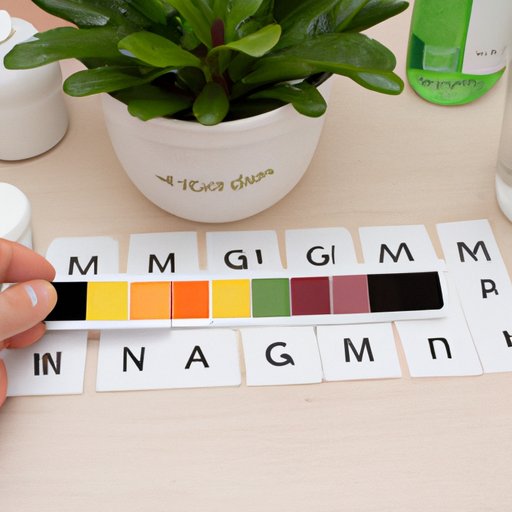Introduction
Magnesium is an essential mineral that helps regulate many bodily processes, from muscle and nerve function to energy production and metabolism. When magnesium levels are too low, it can cause a variety of health problems, ranging from fatigue and headache to muscle cramps and irregular heartbeat. It’s important to keep track of your magnesium levels and take steps to ensure they stay within a healthy range. Luckily, there are several ways to test for magnesium deficiency at home.
What is Magnesium Deficiency?
Magnesium deficiency, also known as hypomagnesemia, is a condition in which the body does not have enough magnesium. This can lead to serious health problems, such as fatigue, confusion, muscle weakness, and irregular heartbeat. It’s important to recognize the symptoms of magnesium deficiency and take steps to address them. People who are at higher risk of developing magnesium deficiency include those with digestive disorders, such as Crohn’s disease and celiac disease, and people taking certain medications, such as diuretics and antibiotics.
Urine Test
One of the simplest ways to test for magnesium deficiency is through a urine test. A urine test measures the amount of magnesium in your urine and can help determine if you are deficient. Your doctor may order a urine test if they suspect you may have a magnesium deficiency or if they want to monitor your magnesium levels over time. Urine tests are easy and relatively inexpensive, but they only measure the amount of magnesium that has been excreted by the body, not the amount that is actually present in the body.
Diet
The best way to prevent and treat magnesium deficiency is to make sure you’re getting enough of this important mineral in your diet. Eating foods that are rich in magnesium, such as dark leafy greens, nuts, seeds, and legumes, can help ensure that you’re getting enough magnesium. Additionally, avoiding processed and refined foods and reducing your intake of caffeine, alcohol, and sugar can help keep your magnesium levels in check.
Skin Signs
Another way to test for magnesium deficiency is to look for signs on your skin. Low magnesium levels can cause dryness, flakiness, and itching. If you notice any of these signs, it may be a sign of magnesium deficiency. To monitor these signs, you should pay close attention to your skin and take note of any changes. If you suspect that you may be deficient in magnesium, you should talk to your doctor.
Blood Test
A blood test is another way to test for magnesium deficiency. A blood test measures the amount of magnesium in your blood, which can give a more accurate picture of your magnesium levels than a urine test. However, a blood test can be more expensive and invasive than a urine test, so it may not be the best option for everyone. Talk to your doctor to see if a blood test is right for you.
Nutritionist
If you’re concerned about your magnesium levels, it’s a good idea to consult a nutritionist. A nutritionist can help you create a personalized plan for managing your magnesium levels. They can advise you on which foods to eat and which supplements to take to help increase your magnesium levels. Additionally, a nutritionist can help you identify other factors that may be affecting your magnesium levels, such as stress, lack of sleep, or certain medications.
Home Test Strip
Another option for testing your magnesium levels at home is to use a home test strip. These strips are designed to measure the amount of magnesium in drinking water. Simply dip the strip into your drinking water and wait for the results. The color of the strip will indicate the amount of magnesium in the water. If the color is light, then the water has a high concentration of magnesium; if the color is dark, then the water has a low concentration of magnesium.
Symptoms
The best way to determine if you’re deficient in magnesium is to pay attention to your body. Common symptoms of magnesium deficiency include fatigue, headache, muscle cramps, and irregular heartbeat. If you experience any of these symptoms, it’s a good idea to talk to your doctor and get tested for magnesium deficiency.
Conclusion
Testing for magnesium deficiency at home is possible with a variety of methods. Urine tests, dietary changes, monitoring skin signs, blood tests, consulting a nutritionist, and using home test strips are all effective ways to test for magnesium deficiency at home. If you suspect that you may be deficient in magnesium, it’s important to talk to your doctor and take steps to ensure that your magnesium levels stay within a healthy range.


